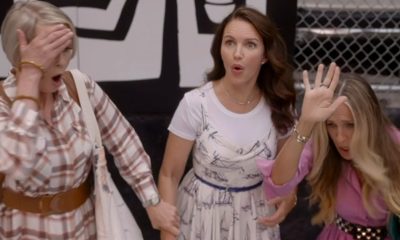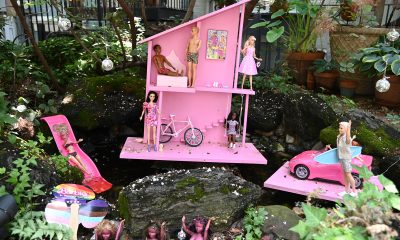Books
‘A Star is Bored’ a delicious work of fiction
Carrie Fisher’s assistant pens irresistible novel
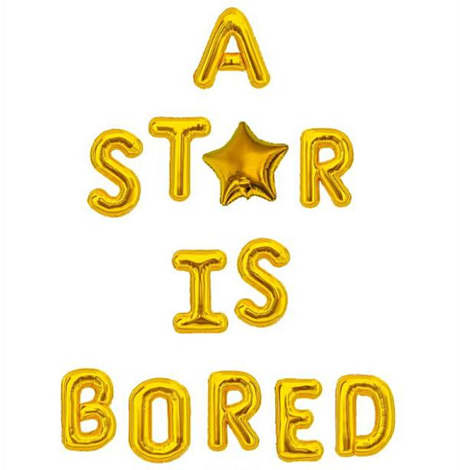
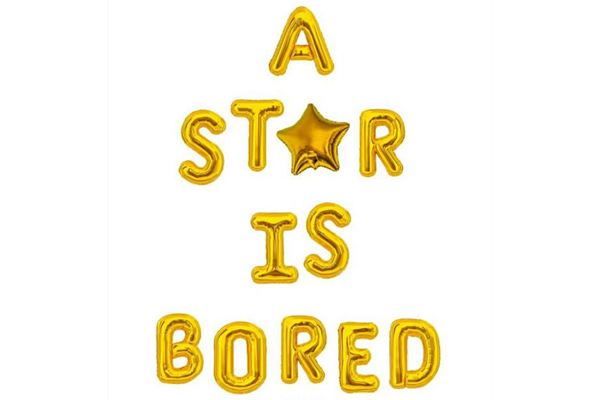
‘A Star Is Bored’
By Byron Lane
Henry Holt and Co.
$26.99/352 pages
“If my life wasn’t funny, it would just be true,” the late actress, writer, screenwriter and gay icon Carrie Fisher wrote in “Wishful Drinking,” her memoir, which she performed in a one-woman show.
I miss Fisher! She was loved by her legions of fans for her indelible portrayal of Princess Leia in the “Stars Wars” franchise and other performances — from Marie in “When Harry Met Sally,” to her cameo in a “Sex and the City” episode. Fisher, the daughter of Eddie Fisher and queer icon Debbie Reynolds, had bi-polar disorder and struggled with substance abuse. In “Postcards from the Edge” and other novels and memoirs, she wrote with wry humor about alcoholism, drug addiction, mental illness and life as Hollywood royalty.
Byron Lane, author of “A Star Is Bored,” was Fisher’s personal assistant for several years. This irreverent, yet poignant debut novel is the fictional story of 29-year-old Charlie Besson’s life as the personal assistant to the queer icon, actress and writer Kathi Kannon. Kannon, aged 59, renowned for starring as Princess Talara in the blockbuster film “Nova Quest,” is bi-polar and struggles with alcohol abuse and drug addiction. As with the case with Carrie Fisher and Debbie Reynolds, Gracie Gold (Miss Gracie) lives next door to Kathi.
From the get-go, Lane says the book isn’t an account of his experience as Fisher’s personal assistant. He isn’t Charlie and Kathi isn’t Fisher.
You’ll know you’re in for a fun ride when you read Lane’s disclaimer. “This is a work of fiction…” Lane, the partner of novelist Steven Rowley, writes, “Any resemblance to reality is purely coincidental, including, names, places, weapons and sexual acts.”
“A Star Is Bored” is a coming-of-age novel. Charlie, who’s gay, grew up in Louisiana. When he’s 12, his loving mother dies. She didn’t mind that Charlie didn’t play sports as the other boys did. Knowing that he worshiped Princess Talara, she gave him a Princess Talara action figure.
His father was another story. He’s abusive and homophobic. As a child, Charlie loved Oreos (but only for their filling). One day, after he realized that Charlie had thrown the chocolate part of the cookies into the trash, his Dad made him eat the cookie remnants out of the garbage.
His father was no fan of the Princess Talara action figure! “He thought female action figures were the reason I ‘ran like a girl,’” Lane writes.
Even when he’s grown up and Kathi is interviewing him for the assistant job, Lane writes, Charlie says his father’s “masculine voice is still screaming at me, in my head…even while here, auditioning for a new role in Hollywood’s royal court.”
It’s no wonder that on his way to his job interview with Kathi, Charlie, who’s been working the graveyard shift for a local news station, says his life “feels like rot.”
It’s not surprising that his therapist says Charlie engages in “passive suicidal behavior” or that Charlie’s love life sucks. Hope enters his world when he becomes assistant to Kathy, who Charlie says is the “heroine of film, television, maybe my life.”
Working for his idol, though life-changing, is far from easy. Kathi lives in a mansion that “looks like a carnival,” Lane writes, “like an acid trip…like heaven.”
Kathi is friends with Meg Ryan and other celebs. She gives Charlie not only a gorgeous sweater and other swag but the inimitable nicknames “cockring” and “stepson.” She has, Lane writes, a moose head who “once saw Jack Nicholson nude.”
Yet, Kathi is demanding – wanting Charlie to answer ASAP, 24/7 questions like, “Where’s that website with those things I hate in that store I love?”
Kathi’s demands and sallies are often laugh-out-loud funny. But, there’s sadness in her story for us and for Charlie. She struggled with drug addiction and often resists taking her bi-polar meds.
Despite these challenges, Charlie learns how to change his life as he works for Kathi. You’ll root for him as he looks for sex and romance – while knowing that the bond forged between Charlie and Kathi is its own love story.
If you want to forget the pandemic, check out “A Star Is Bored.” It’s a scene-stealing read.
Books
Embracing the chaos can be part of the fun
‘Make Sure You Die Screaming’ offers many twists and turns
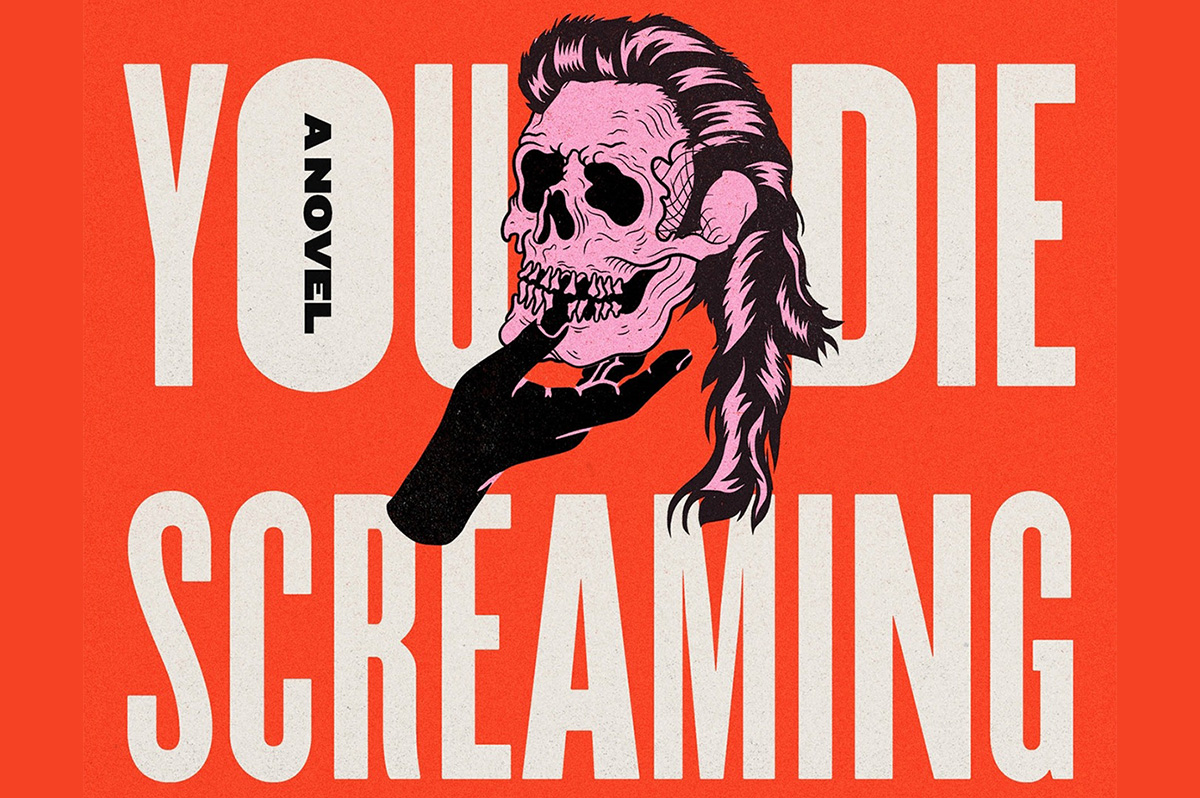
‘Make Sure You Die Screaming’
By Zee Carlstrom
c.2025, Random House
$28/304 pages
Sometimes, you just want to shut the door and forget what’s on the other side.
You could just wipe it from your memory, like it didn’t occur. Or create an alternate universe where bad things never happen to you and where, as in the new novel “Make Sure You Die Screaming” by Zee Carlstrom, you can pretend not to care.

Their mother called them “Holden,” but they’d stopped using that name and they hadn’t decided what to use now. What do you call an alcoholic, queer, pessimistic former ad executive who’s also “The World’s First Honest White Man,” although they no longer identify as a man? It’s a conundrum that they’ll have to figure out soon because a cop’s been following them almost since they left Chicago with Yivi, their psychic new best friend.
Until yesterday, they’d been sleeping on a futon in some lady’s basement, drinking whatever Yivi mixed, and trying not to think about Jenny. They killed Jenny, they’re sure of it. And that’s one reason why it’s prudent to freak out about the cop.
The other reason is that the car they’re driving was stolen from their ex-boyfriend who probably doesn’t know it’s gone yet.
This road trip wasn’t exactly well-planned. Their mother called, saying they were needed in Arkansas to find their father, who’d gone missing so, against their better judgment, they packed as much alcohol as Yivi could find and headed south. Their dad had always been unique, a cruel man, abusive, intractable; he suffered from PTSD, and probably another half-dozen acronyms, the doctors were never sure. They didn’t want to find him, but their mother called…
It was probably for the best; Yivi claimed that a drug dealer was chasing her, and leaving Chicago seemed like a good thing.
They wanted a drink more than anything. Except maybe not more than they wanted to escape thoughts of their old life, of Jenny and her death. And the more miles that passed, the closer they came to the end of the road.
If you think there’s a real possibility that “Make Sure You Die Screaming” might run off the rails a time or three, you’re right. It’s really out there, but not always in a bad way. Reading it, in fact, is like squatting down in a wet, stinky alley just after the trash collector has come: it’s filthy, dank, and profanity-filled. Then again, it’s also absurd and dark and philosophical, highly enjoyable but also satisfying and a little disturbing; Palahniuk-like but less metaphoric.
That’s a stew that works and author Zee Carlstrom stirs it well, with characters who are sardonic and witty while fighting the feeling that they’re unredeemable losers – which they’re not, and that becomes obvious.
You’ll see that all the way to one of the weirdest endings ever.
Readers who can withstand this book’s utter confusion by remembering that chaos is half the point will enjoy taking the road trip inside “Make Sure You Die Screaming.”
Just buckle up tight. Then shut the door, and read.
The Blade may receive commissions from qualifying purchases made via this post.
Books
Two new books on dining out LGBTQ-style
Visit nightclubs, hamburger joints, and a bathhouse that feeds customers

‘What is Queer Food? How We Served a Revolution’
By John Birdsall
c.2025, W.W. Norton
$29.99/304 pages
‘Dining Out: First Dates, Defiant Nights, and Last Call Disco Fries at America’s Gay Restaurants’
By Erik Piepenburg
c.2025, Grand Central
$30/352 pages
You thought a long time about who sits where.
Compatibility is key for a good dinner party, so place cards were the first consideration; you have at least one left-hander on your guest list, and you figured his comfort into your seating chart. You want the conversation to flow, which is music to your ears. And you did a good job but, as you’ll see with these two great books on dining LGBTQ-style, it’s sometimes not who sits where, but whose recipes were used.
When you first pick up “What is Queer Food?” by John Birdsall, you might miss the subtitle: “How We Served a Revolution.” It’s that second part that’s important.

Starting with a basic gay and lesbian history of America, Birdsall shows how influential and (in)famous 20th century queer folk set aside the cruelty and discrimination they received, in order to live their lives. They couldn’t speak about those things, he says, but they “sat down together” and they ate.
That suggested “a queer common purpose,” says Birdsall. “This is how who we are, dahling, This is how we feed our own. This is how we stay alive.”
Readers who love to cook, bake or entertain, collect cookbooks, or use a fork will want this book. Its stories are nicely served, they’re addicting, and they may send you in search of cookbooks you didn’t know existed.
Sometimes, though, you don’t want to be stuck in the kitchen, you want someone else to bring the grub. “Dining Out” by Erik Piepenburg is an often-nostalgic, lively look at LGBTQ-friendly places to grab a meal – both now and in the past.

In his introduction, Piepenburg admits that he’s a journalist, “not a historian or an academic,” which colors this book, but not negatively. Indeed, his journeys to “gay restaurants” – even his generous and wide-ranging definitions of the term – happily influence how he presents his narrative about eateries and other establishments that have fed protesters, nourished budding romances, and offered audacious inclusion.
Here, there are modern tales of drag lunches and lesbian-friendly automats that offered “cheap food” nearly a century ago. You’ll visit nightclubs, hamburger joints, and a bathhouse that feeds customers on holidays. Stepping back, you’ll read about AIDS activism at gay-friendly establishments, and mostly gay neighborhood watering holes. Go underground at a basement bar; keep tripping and meet proprietors, managers, customers and performers. Then take a peek into the future, as Piepenburg sees it.
The locales profiled in “Dining Out” may surprise you because of where they can be found; some of the hot-spots practically beg for a road trip.
After reading this book, you’ll feel welcome at any of them.
If these books don’t shed enough light on queer food, then head to your favorite bookstore or library and ask for help finding more. The booksellers and librarians there will put cookbooks and history books directly in your hands, and they’ll help you find more on the history and culture of the food you eat. Grab them and you’ll agree, they’re pretty tasty reads.
The Blade may receive commissions from qualifying purchases made via this post.

You’re going to be on your feet a lot this month.
Marching in parades, dancing in the streets, standing up for people in your community. But you’re also likely to have some time to rest and reflect – and with these great new books, to read.
First, dip into a biography with “Marsha: The Joy and Defiance of Marsha P. Johnson” by Tourmaline (Tiny Rep Books, $30), a nice look at an icon who, rumor has it, threw the brick that started a revolution. It’s a lively tale about Marsha P. Johnson, her life, her activism before Stonewall and afterward. Reading this interesting and highly researched history is a great way to spend some time during Pride month.
For the reader who can’t live without music, try “The Dad Rock That Made Me a Woman” by Niko Stratis (University of Texas Press, $27.95), the story of being trans, searching for your place in the world, and finding it in a certain comfortable genre of music. Also look for “The Lonely Veteran’s Guide to Companionship” by Bronson Lemer (University of Wisconsin Press, $19.95), a collection of essays that make up a memoir of this and that, of being queer, basic training, teaching overseas, influential books, and life.
If you still have room for one more memoir, try “Walk Like a Girl” by Prabal Gurung (Viking, $32.00). It’s the story of one queer boy’s childhood in India and Nepal, and the intolerance he experienced as a child, which caused him to dream of New York and the life he imagined there. As you can imagine, dreams and reality collided but nonetheless, Gurung stayed, persevered, and eventually became an award-winning fashion designer, highly sought by fashion icons and lovers of haute couture. This is an inspiring tale that you shouldn’t miss.
No Pride celebration is complete without a history book or two.
In “Trans History: From Ancient Times to the Present Day” by Alex L. Combs & Andrew Eakett ($24.99, Candlewick Press), you’ll see that being trans is something that’s as old as humanity. One nice part about this book: it’s in graphic novel form, so it’s lighter to read but still informative. Lastly, try “So Many Stars: An Oral History of Trans, Nonbinary, Genderqueer, and Two-Spirit People of Color” by Caro De Robertis (Algonquin Books of Chapel Hill. $32.00) a collection of thoughts, observations, and truths from over a dozen people who share their stories. As an “oral history,” you’ll be glad to know that each page is full of mini-segments you can dip into anywhere, read from cover to cover, double-back and read again. It’s that kind of book.
And if these six books aren’t enough, if they don’t quite fit what you crave now, be sure to ask your favorite bookseller or librarian for help. There are literally tens of thousands of books that are perfect for Pride month and beyond. They’ll be able to determine what you’re looking for, and they’ll put it directly in your hands. So stand up. March. And then sit and read.
-

 Virginia1 day ago
Virginia1 day agoDefying trends, new LGBTQ center opens in rural Winchester, Va.
-
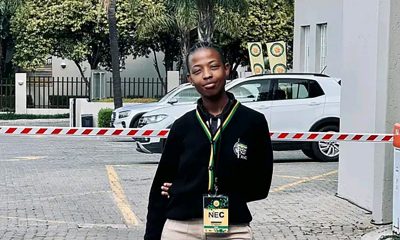
 South Africa4 days ago
South Africa4 days agoLesbian feminist becomes South African MP
-
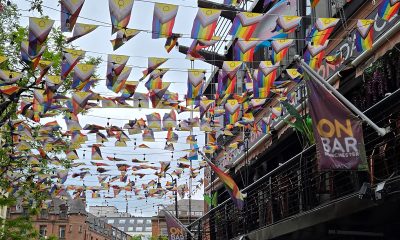
 Travel3 days ago
Travel3 days agoManchester is vibrant tapestry of culture, history, and Pride
-

 Opinions2 days ago
Opinions2 days agoUSAID’s demise: America’s global betrayal of trust with LGBTQ people



